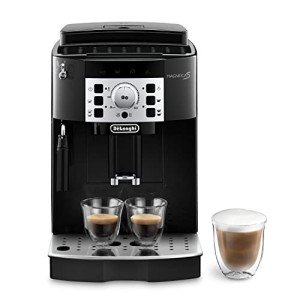The Ultimate Guide to Whole Bean Coffee Machines
In an age where coffee enthusiasts have actually ended up being significantly discerning, the option of a coffee machine has actually ended up being more critical than ever. Whole bean coffee machines have actually emerged as a preferred amongst major coffee drinkers, enabling them to draw out the freshest tastes from coffee beans. This post explores the intricacies of whole bean coffee machines, exploring their features, benefits, and considerations for the devoted coffee fan.
What is a Whole Bean Coffee Machine?
A whole bean coffee machine is developed to grind coffee beans prior to developing, ensuring maximum freshness and flavor extraction. Unlike conventional coffee machine that count on pre-ground coffee, these machines include a mill, which permits the user to choose the grind size fit to their developing approach, from espresso to French press.
Benefits of Whole Bean Coffee Machines
- Freshness: The main advantage of using whole beans is that they keep their taste longer than pre-ground coffee. Grinding prior to brewing protects the fragrant oils that contribute to the overall taste profile.
- Personalization: Many whole bean machines allow users to adjust grind settings, water temperature level, and brewing time to produce a tailored cup of coffee that meets specific preferences.
- Quality Control: Whole bean coffee machines empower users to select high-quality beans from various sources, making it much easier to explore distinct taste profiles.
- Adaptability: These machines accommodate various brewing techniques, allowing users to craft espresso, drip coffee, or specialized brews with ease.
- Convenience: Integrated grinders simplify the coffee-making procedure, lowering the need for additional equipment and minimizing cleanup.
Secret Features to Consider
When selecting a whole bean coffee machine, numerous functions should be thought about:
Grinder Type:
- Burr vs. Blade: Burr grinders use a more consistent grind, which is crucial for consistency in flavor, whereas blade mills tend to produce irregular grinds.
- Brew Method Compatibility: Ensure the machine can accommodate the developing approach chosen (e.g., espresso, pour-over, French press).
- Capability: Consider the hopper size for holding coffee beans; larger capacities suggest less frequent refilling.
- User Interface: Look for machines with instinctive controls, permitting users of all ability levels to operate them quickly.
- Maintenance: Machines that are easy to tidy and keep will conserve time and make sure the longevity of the device.
- Material Quality: Stainless steel and high-grade plastic offer toughness, while machines with glass elements tend to be less resilient.
Popular Whole Bean Coffee Machines
| Brand | Model | Mill Type | Capability (Cups) | Features | Rate Range (₤) |
|---|---|---|---|---|---|
| Breville | BES870XL Barista Express | Burr | 8 | Espresso machine, steam wand | 600 - 700 |
| De'Longhi | EC702 | Pump | 10 | Double boiler system, stainless steel | 300 - 400 |
| Cuisinart | DCC-3200P1 | Blade | 14 | 24-hour programmable, drip coffee | 50 - 100 |
| Rancilio | Silvia | Burr | 2 | Professional feel, steam power | 700 - 800 |
| Hamilton Beach | 49980A | Mixed | 2 | Single-serve, versatile developing | 30 - 50 |
How to Make one of the most Out of Your Whole Bean Coffee Machine
To accomplish the very best outcomes with a whole bean coffee machine, think about the following tips:
- Quality Beans: Always pick high-quality, fresh beans that fit your taste.
- Grind Size: Adjust the grind size based upon the brewing technique. Finer grinds are suitable for espresso, while coarser grinds work much better for French press.
- Developing Temperature: Water temperature level need to typically be between 195 ° F and 205 ° F (90 ° C -96 ° C) for optimal extraction.
- Water Quality: Use filtered water for the best flavor and to prolong the machine's life expectancy.
- Maintenance Schedule: Regularly clean the mill and machine to avoid residue buildup and make sure consistent performance.
Frequently Asked Questions about Whole Bean Coffee Machines
1. Is a whole bean coffee machine worth the investment?
Yes, if you value the freshness and taste of your coffee, buying a whole bean coffee machine is beneficial. It enables for a richer and more fragrant cup of coffee compared to pre-ground choices.
2. How do Coffeee tidy my whole bean coffee machine?
A lot of machines include cleaning guidelines. Usually, you'll need to remove the grinder, tidy the hopper, and run a cleaning cycle with water. Usage brushes particularly developed for this function.
3. Can I use pre-ground coffee in a whole bean machine?
Most whole bean coffee machines are specifically created for whole beans; nevertheless, some might allow you to use pre-ground coffee. Speak with the producer's standards.
4. What is the best grind size for espresso?
A fine grind is normally chosen for espresso. Nevertheless, experimentation can assist find the perfect grind size that matches your taste choices.
5. How often should I replace the coffee beans?
For optimum freshness, it is motivated to utilize coffee beans within two weeks of opening after they have actually been roasted. Shop them in an airtight container far from light and wetness.
A whole bean coffee machine can elevate the coffee experience, offering freshness, modification, and exceptional taste. With various options available, potential buyers can discover a machine that fits their lifestyle and coffee preferences. By considering the aforementioned features, suggestions for optimization, and keeping a consistent cleansing regimen, users can relish every cup of newly brewed, fragrant coffee for many years to come. Whether for individual use or entertaining visitors, investing in a whole bean coffee machine is a step towards coffee perfection.

